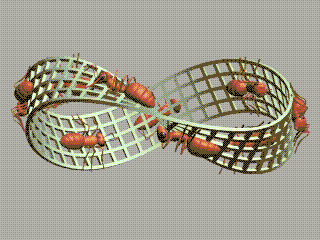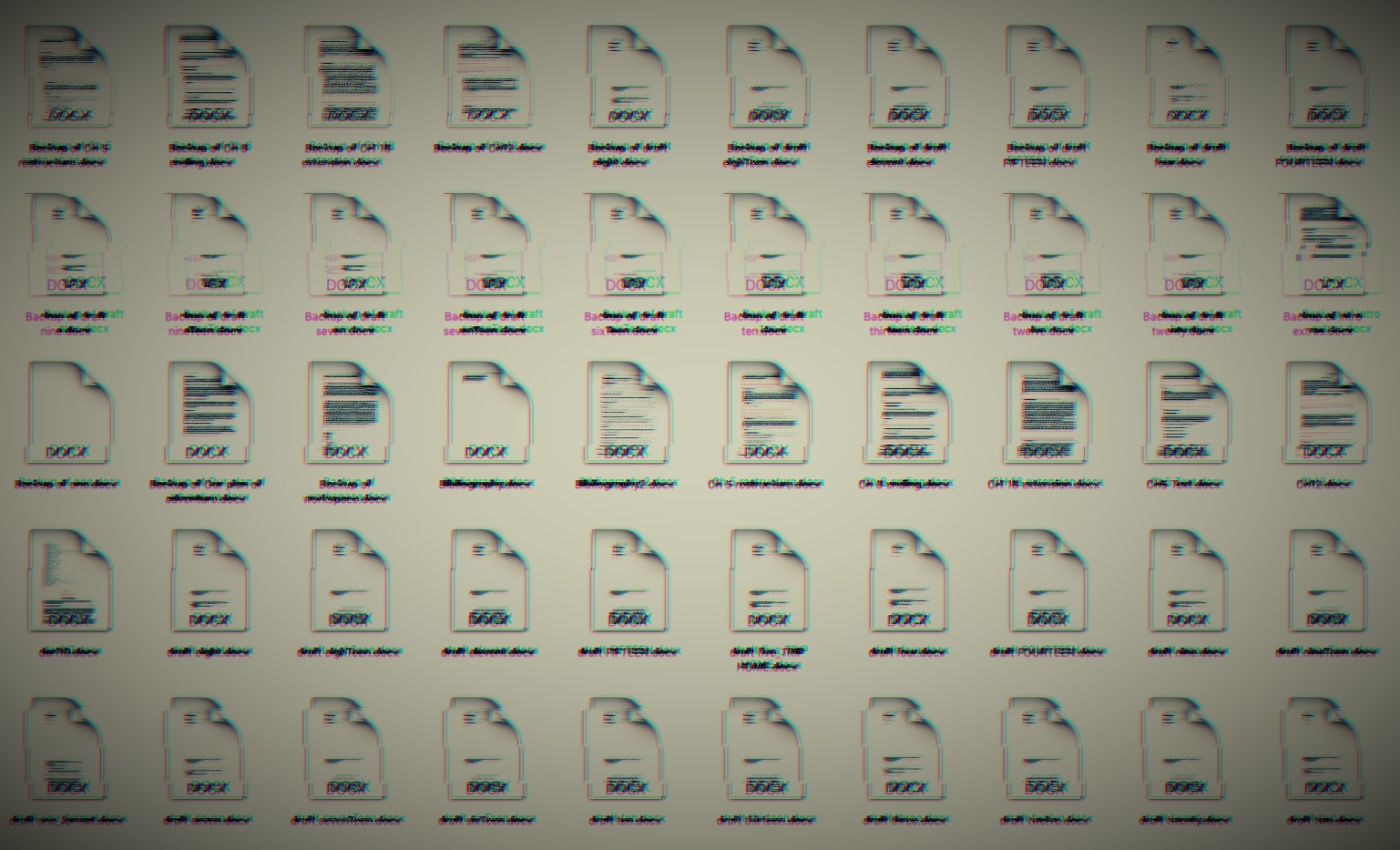I do not remember writing Info We Trust.
It certainly happened. I can tell you about the room I worked in and the keyboard I banged on. I can even analyze its two dozen drafts and describe my process. But I do not have any real emotional memory of a particular moment of actually doing the writing.
This is part of a continuing series of design essays about the making of Info We Trust. It is my explanation for why writing is more challenging than any other technology this engineer has ever grappled with. I want to share what I learned about why the emotional and ethereal elements of writing are so hard.
What you are trying to do when you write
One way to think of the human mind is a multi-dimensional map of connected concepts. Let's highlight three of these dimensions with the concept of money:
- The word money can be understood as a medium of exchange or measure of value or wealth or funds or a form of denomination or currency or betting prize or wealthy person or many other meanings. Each word prompts various concepts depending on the context of its use.
- Concepts fit into a metaphorical tower that reaches into abstraction. For example, money fits into a metaphorical stack that tethers complex legal fictions to physical objects: houses can be purchased with loans which can be bundled into mortgage-backed securities.
- Concepts can trigger a cascade of associations: money > bills > allowance > chores > home > family.
In Surfaces and Essences, Hofstadter and Sander give directions to two of these conceptual dimensions: “Any domain, no matter how limited it might seem from afar, can be refined forever not only horizontally (the number of categories) but also vertically (the levels of abstraction).”
What you are doing when you research, think, and sketch out an idea is explore its many dimensions. To create new ideas is often simply charting new connections between existing concepts.
Ideas are so multifaceted that you can rarely depict them in 3-D space. When I try to see idea shapes in my head I see a spinning and pulsing crystal lattice, with many vertices connecting many points, which each contain loops through other domains. If we were to take a snapshot of an idea-shape it might look something like this cross section of the quintic Calabi–Yau manifold:

Developing your personal conception of any multi-faceted idea-shape is not the hardest part though. The job of the writer is to take this multi-dimensional idea-shape and replicate it with some reasonable fidelity in the mind of the reader. The hardest part is to create the journey through this multi-dimensional space for your reader, with only the use of one-dimensional text. It's like describing a Möbius strip by only walking about its surface.

The one-dimensional constraint is the hard part. You cannot show the reader the whole shape all at once. Instead, the writer must rebuild the complex shape-word by-word. You have to pick a starting point and proceed through the shape, in sequence, step-by-step, along a narrow narrative path.
Great writers, nonfiction and fiction, are experts at guiding readers on these journeys. They take control of the reader’s mental flow, sometimes transporting them so far inside the world of the idea that the reader identity disappears. This is the kind of experience readers enjoy most.
You can’t show the reader the whole object at once. You have to know where to start, where to end, and how to keep the whole journey interesting. Writing is hard.
The personal connection
I have isolated myself in pursuit of making things before. I once spent a year alone in a windowless basement doing science. By the time I emerged from the basement, I had lost the few social skills I had going in—and decided that bench research was not for me. But the isolation of writing Info We Trust was somehow even more alarming and frightful than this research experience.
To write about data storytelling, I had to dig into language. This allowed me to see certain connections between words, for example: to edit is to revise and to revise is to make a revision, which means that when we edit we are making new visions, or seeing again and in a new way.
To dig into language is to probe the ways you think. And as I probed fundamental concepts my mind began to unravel. I believe (most of) this unraveling was necessary. But sometimes it felt like I dug so deep that I hit (my) cognitive bottom. I had strange experiences where semantic satiation and saturation took over. Concepts lost meaning entirely. Overwhelmed with language, I felt like my ability to synthesize high-levels of abstraction was slipping away. It felt like I had reduced myself to Proto-Indo-European roots and found nothing left to exhume.
And here’s the rub. The deeper this exploration took me, the more socially and physically and psychologically isolated I became. You don’t probe your own mental depths with friends. You do it by yourself, on long walks and in a tiny room. 2 AM becomes your new favorite time because no one else is disturbs you then. You keep the shades drawn and the lights very low during the day. I began to call this my vampire time.
I don’t believe I have many salient memories of this time because, in some sense, I wasn’t there. My own personal identity disappeared during the most intense thinking and writing periods. Maybe it faded because I departed high-level consciousness to think at a more basic level. Maybe it faded because my mind became somehow fused with the book, totally in service to its production. Or maybe I don’t remember because I’ve buried this emotional experience. Writing is hard.
Forget the prize
Info We Trust is a product of a significant amount of scope creep. At its outset I did not expect to produce all of its illustrations by hand or do all of the book design. Once these demands were in place the pace of production felt like it halted. Even with the knowledge of my own rate of progress, I continually underestimated how long anything would take.
It was not helpful to think hopefully about the eventual end, the completion of the book. The whole scale of the project was too daunting. Thinking about everything that had to be done, the macro-journey, was emotionally distracting from the work that had to happen today.
About halfway through production we began considering cover design seriously. I went to a bookstore with my wife to do some market research. I learned a lot, especially about the importance of an eye-catching spine (Info We Trust now sports a very arresting spine because of this trip). But seeing ten thousand books at once was not helpful. It made my individual effort seem small. It made the whole endeavor which I was currently consumed with feel meaningless. My head began to panic. What was the point of producing one more book? At best it would just end up on a shelf collecting dust!… My wife came to my rescue with the right mix of tough love she is so expert at delivering, Honey, you are in a book store. They have lots of books. That’s how it works. It wasn't the last time she rescued me from my own anxiety.
The attitude I adopted, and that carried me through the process, had little to do with envisioning the final product. Instead, every day, I tried to acknowledge how special that day was. It was a real privilege to take a year to write Info We Trust. Being in the creative throes of making is not something everyone, even creatives, get to engage in everyday. I kept that in the front of my mind, and used that attitude of gratefulness to maintain the right kind of respect and perspective on the process.
So, all of that—multidimensional concepts, mental unraveling, a terrifying scope—might be a bit of a dramatic description of what it was like to write a book. But I think it begins to describe what it was like to write, and why I found writing to be hard.
Without spoiling any of the surprise, I am absolutely delighted with the result of this struggle. Today I am so emotionally distant from the book that it easy for me to turn to any page and get lost in the flow of its text.
Future essays will detail some tactics that helped me write, so it need not be harder than necessary. I am also drafting a small forensic analysis of my writing and editing process. I hope to show you the complete production timeline, including how each chapter morphed, and detail how a book gets polished via the inputs of its many readers and editors.
Until then, catch up with all of the pre-publication goodies at the book’s main page and please consider pre-ordering INFO WE TRUST today. Every order counts a lot pre-launch, and we are counting every one!
Info We Trust (the website) is an award-winning ‘data adventure’ exploring how to better humanize information. Data storyteller RJ Andrews is based in San Francisco and the author of Info We Trust: How to Inspire the World with Data. Please let me know what you think via Twitter @infowetrust or the contact page.


No comments.